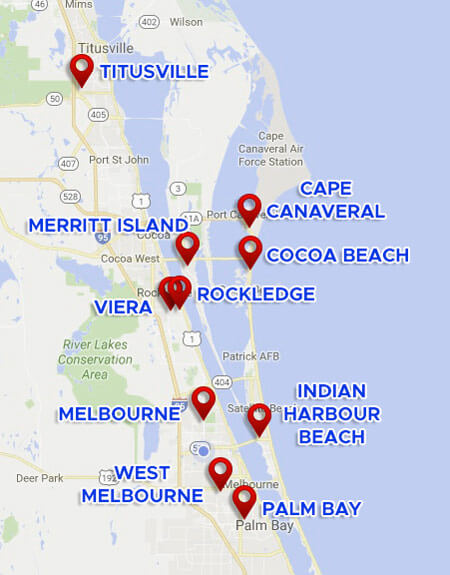Respiratory Illness? Breathe Easy at Home with These IAQ Tips
Posted: January 15, 2016

Did you know that Americans – even those in Palm Bay – spend 90 percent of their time indoors? And did you also know that the air inside the home is two to five times dirtier than the air outside? In fact, the Environmental Protection Agency has found that the air we breathe at home is one of the top five environmental hazards. And that’s why we’re talking about indoor air quality today.
The air in your home is fraught with gaseous and particulate pollutants, and it could be contributing to your asthma, allergies, COPD, and other respiratory illnesses. Gaseous contaminants come from cooking fumes, using household chemicals, and the off gassing of synthetic building materials and household goods. Gaseous pollution and particles like pollen, mold, dust mites, and dander can seriously compromise your respiratory health, especially if you already suffer from a respiratory illness. And dirty indoor air can lead to new respiratory problems down the road.
If anyone knows clean air, it’s Brevard Cooling & Heating, Inc., and we know that maintaining clean air is a matter of a three-pronged approach of source control, air cleaning, and ventilation.
Source Control
Keeping pollutants out of your home in the first place is the best way to ensure the air you breathe is healthy. Here are some things we recommend for keeping harmful contaminants out of your house:
- Don’t wear your shoes inside. Your soles pick up a lot of nasty substances while you’re gadding about in Palm Bay, including pesticides, pollen, mold, and motor oil, and your shoes track it all in to your rooms.
- Use non-toxic cleaning solutions. The chemicals you use to clean your house don’t just disappear. They remain in your air, and you inhale them every time you breathe. Using nontoxic cleaners or essential oils with anti-microbial and anti-bacterial properties will go a long way toward reducing the numbers and amounts of chemicals in your air.
- Choose natural fibers and building materials whenever possible. Synthetic rugs and upholstery, composite wood furniture, and the paint on your walls off-gas a number of volatile organic compounds (VOCs) and other frightful chemicals for a long time.
Ventilation
Opening windows during the summer isn’t really an option most days in Palm Bay due to the extreme heat and humidity. That’s why a mechanical ventilation system like an energy recovery ventilator (ERV) is essential if your home is newer or tightly sealed. Exchanging stale, contaminated indoor air for fresh outdoor air is critical to good air quality, and an ERV is constantly sending old air outside and using the energy from the outgoing air to pre-cool and dehumidify the fresh, incoming air so that your energy bills don’t skyrocket.
Other ways you can improve ventilation to reduce contaminants in your air include using your kitchen and bathroom vents whenever you’re cooking, showering, or using body care products, which contain more chemicals than you might imagine.
Air Cleaning
The pollutants you can’t keep out or remove through ventilation can be cleaned up by a portable or whole-house air cleaner. A portable cleaner can be moved from room to room, while a whole-house system resides in your HVAC ductwork to clean the air as it moves through.
- UV lights in your HVAC system kill biological contaminants like bacteria, viruses, mold, and dust mites.
- In-duct or portable HEPA filters trap even the tiniest particles in the air that moves through.
- Portable mechanical (filter) and electronic (ion generating) air cleaners trap particles and chemicals in single rooms.
And don’t forget your HVAC air filter! That’s your first defense against poor indoor air quality, and it’s wise to invest in high-quality, pleated air filters that trap more and smaller particles. An air filter with a MERV rating of 12 is the highest quality filter available for residential use, and it traps over 90 percent of particles between 3 and 10 microns, like pollen, mold, dust mites, and hairspray, and up to 90 percent or more of those between 1 and 3 microns, like bacteria, lead dust, dander, and fungal spores.
We want to breathe healthy air! For more expert tips about improving your indoor air quality, please feel free to contact us at Brevard Cooling & Heating, Inc. We’re proud to serve our neighbors in Viera and surrounding Brevard County communities, and we can help you breathe easier and enjoy better health through clean indoor air.
Have a specific Heating, Ventilating, & Air Conditioning related question?
Ask a Professional. We’re here to help! Call anytime day or night (321) 757-9008

